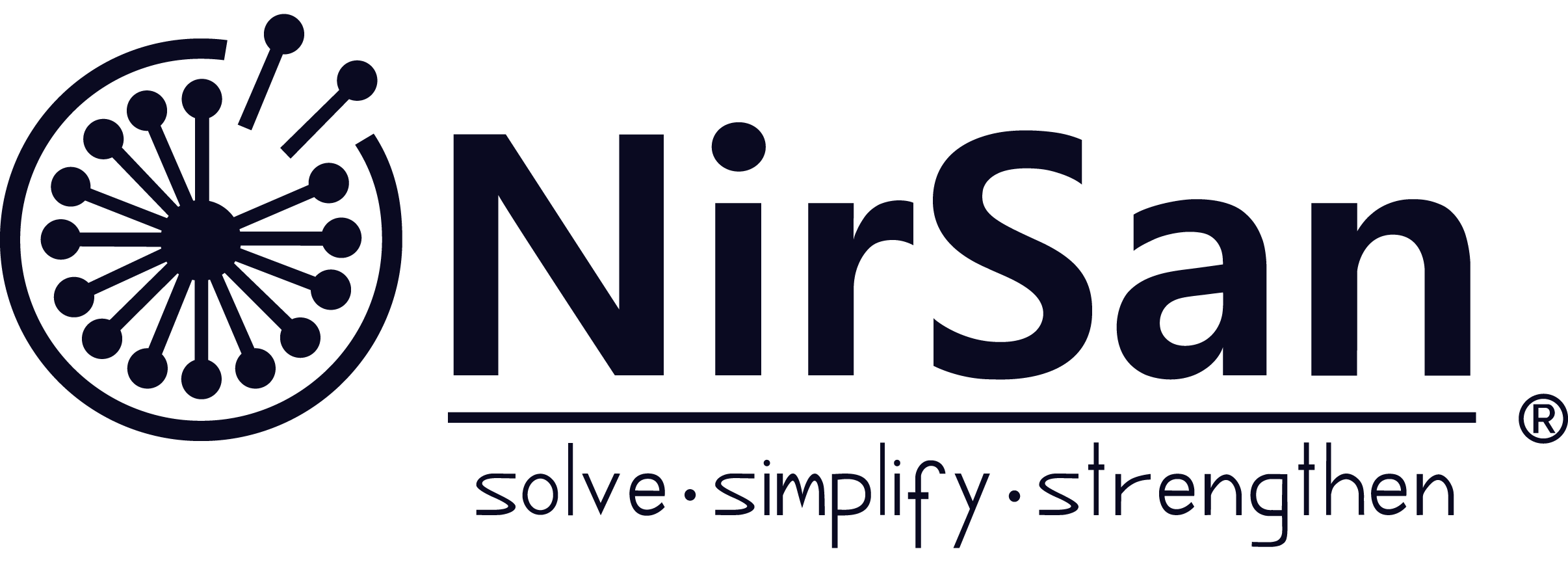
What is ABILEARN®?

Skills are the most substantive differentiators between business organisations. ABILEARN® introduces the concept of Capability Quotient (CQ), bringing to bear factors that have been traditionally neglected in skill building. Going beyond the usual considerations of “content” and “training activity”, ABILEARN® assesses the Capability Quotient of individuals and organisations based on: first, the mode in which individuals acquire skills; second, the manner in which individuals use the skills; third, the extent to which the individual builds on the skill acquired; fourth, the mechanisms through which individuals transmit skills. ABILEARN® provides a view of your CQ, aggregated for organisation and unique for individuals, that allows you to assess skill inventory, learning potential and learning mechanisms of your business.
Skills are what differentiates most substantively between businesses. ABILEARN® goes beyond the usual considerations of “content” and “training activity”, and introduces the concept of Capability Quotient (CQ) based on: first, the individual’s mode of skill acquisition; second, the individual’s skill usage; third, the individual’s building on the skills acquired; fourth, the individual’s mechanisms of transmitting skills. ABILEARN® provides a view of your CQ, aggregated for organisation and unique for individuals, that helps assess skill inventory, learning potential and learning modes of your business.
Skills are what differentiates most substantively between businesses. ABILEARN® goes beyond the usual considerations of “content” and “training activity”, and introduces the concept of Capability Quotient (CQ) based on: first, the individual’s mode of skill acquisition; second, the individual’s skill usage; third, the individual’s building on the skills acquired; fourth, the individual’s mechanisms of transmitting skills. ABILEARN® provides a view of your CQ, aggregated for organisation and unique for individuals, that helps assess skill inventory, learning potential and learning modes of your business.
Skills are what differentiates most substantively between businesses. ABILEARN® goes beyond the usual considerations of “content” and “training activity”, and introduces the concept of Capability Quotient (CQ) based on: first, the individual’s mode of skill acquisition; second, the individual’s skill usage; third, the individual’s building on the skills acquired; fourth, the individual’s mechanisms of transmitting skills. ABILEARN® provides a view of your CQ, aggregated for organisation and unique for individuals, that helps assess skill inventory, learning potential and learning modes of your business.
Why worry about "CQ"? Why get ABILEARN®?
Traditional considerations in skill building include “quality of content”, “quality of trainers” and “quality of environment”. While these are necessary factors, scant thought has gone to the individual’s processing of content and of the skills. Approaches considered contemporary merely suggest that skill building needs to take place in “classroom” as well as “work” settings. ABILEARN® emphasises factors that make the real difference and manifest uniquely in individuals and groups. It assesses and captures “learning modes”, “skill application”, “skill attenuation” and “skill transmission” in the versatile composite measure of Capability Quotient (CQ). Get ABILEARN® to impact and modulate skill building for individuals and groups, and move away from broad-brush and clichéd approaches.
Traditional considerations in skill building include the quality of “content”, “trainers” and “environment”. Scant thought has gone to the individual’s processing of content and of the skills themselves. ABILEARN® emphasises factors that manifest uniquely in individuals and groups, and make a real difference. It captures “learning modes”, “skill application”, “skill attenuation” and “skill transmission” through the versatile measure of Capability Quotient (CQ). Get ABILEARN® to move away from broad-brush clichéd approaches, and substantially impact skill building at the level of individuals and groups.
Traditional considerations in skill building include the quality of “content”, “trainers” and “environment”. Scant thought has gone to the individual’s processing of content and of the skills themselves. ABILEARN® emphasises factors that manifest uniquely in individuals and groups, and make a real difference. It captures “learning modes”, “skill application”, “skill attenuation” and “skill transmission” through the versatile measure of Capability Quotient (CQ). Get ABILEARN® to move away from broad-brush clichéd approaches, and substantially impact skill building at the level of individuals and groups.
Traditional considerations in skill building include the quality of “content”, “trainers” and “environment”. Scant thought has gone to the individual’s processing of content and of the skills themselves. ABILEARN® emphasises factors that manifest uniquely in individuals and groups, and make a real difference. It captures “learning modes”, “skill application”, “skill attenuation” and “skill transmission” through the versatile measure of Capability Quotient (CQ). Get ABILEARN® to move away from broad-brush clichéd approaches, and substantially impact skill building at the level of individuals and groups.

Who will benefit from ABILEARN®?

Large-sized performance units such as departments and functions benefit majorly from ABILEARN®. The characterisation of the unit’s Capability Quotient (CQ) provides unit leaders a handle on performance, and enables them to bring about all-round changes in skill content, training modes and skill application, with the ultimate objective of moving the performance needle. Mid-sized units such as operating teams benefit on similar lines. While assessing collective entities, ABILEARN® provides pertinent feedback and suggestions on structural aspects that can enhance CQ. Individual employees benefit substantially, as they get a nuanced and personalised account of how they learn and deploy their skills. Finally, the Human Resource department benefits from an enhanced ability to skill up the organisation.
Large-sized performance units such as departments and functions benefit majorly from ABILEARN®. The characterisation of the unit’s Capability Quotient (CQ) enables leaders to bring about all-round changes in skill content, training modes and skill application, with the ultimate objective of raising performance. Mid-sized units such as operating teams benefit on similar lines. Employees are major beneficiaries, as they get a nuanced and personalised account of how they learn and deploy their skills. Human Resource departments benefit from an enhanced ability to skill up the organisation.
Large-sized performance units such as departments and functions benefit majorly from ABILEARN®. The characterisation of the unit’s Capability Quotient (CQ) enables leaders to bring about all-round changes in skill content, training modes and skill application, with the ultimate objective of raising performance. Mid-sized units such as operating teams benefit on similar lines. Employees are major beneficiaries, as they get a nuanced and personalised account of how they learn and deploy their skills. Human Resource departments benefit from an enhanced ability to skill up the organisation.
Large-sized performance units such as departments and functions benefit majorly from ABILEARN®. The characterisation of the unit’s Capability Quotient (CQ) enables leaders to bring about all-round changes in skill content, training modes and skill application, with the ultimate objective of raising performance. Mid-sized units such as operating teams benefit on similar lines. Employees are major beneficiaries, as they get a nuanced and personalised account of how they learn and deploy their skills. Human Resource departments benefit from an enhanced ability to skill up the organisation.
Where (in which settings) should you get ABILEARN®?
Get ABILEARN® for your organisation or performance unit when faced with any of six situations. First, when there is a persistent pattern of poor performance despite variations in strategic approaches. Second, when the unit and individual employees are grossly underperforming vis-à-vis their potential. Third, when the organisation has not been able to move the needle on skills despite a healthy training and recruitment budget. Fourth, when existing skill building approaches fail to rouse and inspire employees. Fifth, when senior positions are being filled regularly through external hiring, and internal candidates are failing to make the cut. Sixth, when the human resource department appears more excited about skill building than do employees who are going through the skill building process.
Get ABILEARN® for your organisation or performance unit in any of the following six situations. First, when poor performance persists despite varied strategies. Second, when the unit and individuals grossly underperform vis-à-vis their potential. Third, when skills do not improve despite a healthy training budget. Fourth, when existing skill building approaches fail to rouse and inspire employees. Fifth, when senior positions get filled through external hiring. Sixth, when the human resource department gets more excited about skill building than employees who are undergoing skill building.
Get ABILEARN® for your organisation or performance unit in any of the following six situations. First, when poor performance persists despite varied strategies. Second, when the unit and individuals grossly underperform vis-à-vis their potential. Third, when skills do not improve despite a healthy training budget. Fourth, when existing skill building approaches fail to rouse and inspire employees. Fifth, when senior positions get filled through external hiring. Sixth, when the human resource department gets more excited about skill building than employees who are undergoing skill building.
Get ABILEARN® for your organisation or performance unit in any of the following six situations. First, when poor performance persists despite varied strategies. Second, when the unit and individuals grossly underperform vis-à-vis their potential. Third, when skills do not improve despite a healthy training budget. Fourth, when existing skill building approaches fail to rouse and inspire employees. Fifth, when senior positions get filled through external hiring. Sixth, when the human resource department gets more excited about skill building than employees who are undergoing skill building.

How does ABILEARN® work?

The design of ABILEARN® is based on our proprietary four-part framework called ‘CARE Capability Quotient (CQ)’. With ABILEARN®, you undergo the four stages of ‘installation’, ‘engagement’, ‘analysis’ and ‘dissemination’ over ten weeks. To install ABILEARN®, you outline the symptoms of poor CQ; decide the scope by nominating performance units; and identify respondents for the research. ABILEARN® then engages with respondents through quantitative research, analyses the inputs, and corroborates findings through supplementary qualitative research. The final output for the leadership of the performance unit and organisation includes CARE CQ scores for the unit, individual employees or teams, further disaggregated into the four components of “mode”, “application”, “attenuation” and “transmission”.
ABILEARN® is designed based on our proprietary framework called “CARE Capability Quotient (CQ)”. “Installation”, “engagement”, “analysis” and “dissemination” takes place over ten weeks. To install, you outline the symptoms of poor CQ; nominate performance units; and identify respondents. ABILEARN® engages with respondents through quantitative research, analyses the inputs, and corroborates through qualitative research. The final output includes CARE CQ scores for the unit and employees, further disaggregated into “mode”, “application”, “attenuation” and “transmission”.
ABILEARN® is designed based on our proprietary framework called “CARE Capability Quotient (CQ)”. “Installation”, “engagement”, “analysis” and “dissemination” takes place over ten weeks. To install, you outline the symptoms of poor CQ; nominate performance units; and identify respondents. ABILEARN® engages with respondents through quantitative research, analyses the inputs, and corroborates through qualitative research. The final output includes CARE CQ scores for the unit and employees, further disaggregated into “mode”, “application”, “attenuation” and “transmission”.
ABILEARN® is designed based on our proprietary framework called “CARE Capability Quotient (CQ)”. “Installation”, “engagement”, “analysis” and “dissemination” takes place over ten weeks. To install, you outline the symptoms of poor CQ; nominate performance units; and identify respondents. ABILEARN® engages with respondents through quantitative research, analyses the inputs, and corroborates through qualitative research. The final output includes CARE CQ scores for the unit and employees, further disaggregated into “mode”, “application”, “attenuation” and “transmission”.
When during the operating year should you get ABILEARN®?
ABILEARN® is designed for biennial as well as episodic usage. ABILEARN® requires twelve weeks to go through the ‘installing’, ‘engaging’, ‘analysing’ and ‘disseminating’ phases. ABILEARN® can be used on a biennial cycle for large and mid-sized operating units such as departments, functions and operating teams. We recommend usage during the third or first quarters. Usage during the third quarter is preferable since the inputs can be incorporated into the skill building calendar and programs for the upcoming year. Usage during the first quarter allows enough time to bring about changes for the ongoing year. We advise to refrain from usage in the fourth quarter due to chances of data being poor quality, resulting from performance pressures. For episodic usage of ABILEARN®, we do not suggest a preferred timing.
ABILEARN® can be used on a biennial cycle as well as episodically. When using on a biennial calendar, we recommend usage during the third or first quarters. Usage during the third quarter is preferred since the inputs can be incorporated into the skill building calendar and programs for the upcoming year. Usage during the first quarter allows enough time to bring about changes for the ongoing year. We advise to refrain from usage in the fourth quarter due to chances of data being poor quality, resulting from additional performance pressures. For episodic usage of ABILEARN®, we do not suggest a preferred timing.
ABILEARN® can be used on a biennial cycle as well as episodically. When using on a biennial calendar, we recommend usage during the third or first quarters. Usage during the third quarter is preferred since the inputs can be incorporated into the skill building calendar and programs for the upcoming year. Usage during the first quarter allows enough time to bring about changes for the ongoing year. We advise to refrain from usage in the fourth quarter due to chances of data being poor quality, resulting from additional performance pressures. For episodic usage of ABILEARN®, we do not suggest a preferred timing.
ABILEARN® can be used on a biennial cycle as well as episodically. When using on a biennial calendar, we recommend usage during the third or first quarters. Usage during the third quarter is preferred since the inputs can be incorporated into the skill building calendar and programs for the upcoming year. Usage during the first quarter allows enough time to bring about changes for the ongoing year. We advise to refrain from usage in the fourth quarter due to chances of data being poor quality, resulting from additional performance pressures. For episodic usage of ABILEARN®, we do not suggest a preferred timing.

© Copyright 2019  All rights reserved.
All rights reserved.
© Copyright 2019  All rights reserved.
All rights reserved.
© Copyright 2019  All rights reserved.
All rights reserved.
© Copyright 2019  All rights reserved.
All rights reserved.
